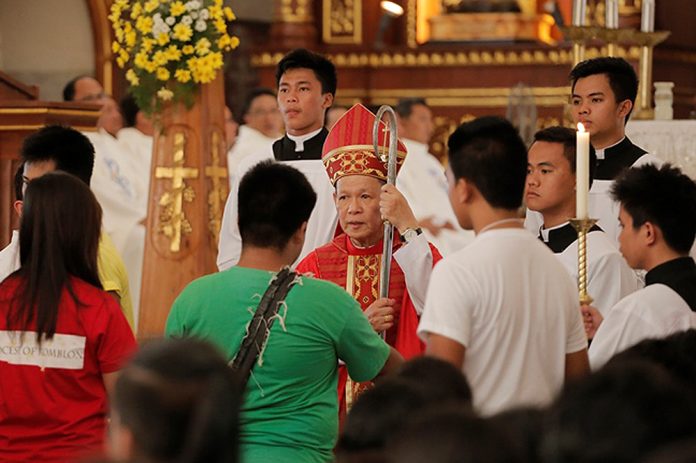When news broke past seven o’clock in the evening on October 25, Saturday, that Archbishop Jose F. Advincula of Capiz was named by Pope Francis as one of the 13 new cardinals from all over the world, the relatively small and less prominent but humble province of Capiz was more than surprised and thrilled, rather skeptical to some extent, if such news is real.
On late Sunday afternoon, the skies of Roxas City turned dark because of the impending landfall of typhoon “Quinta” in the Bicol region. Heavy rains fell around 5:00 p.m. and most people were forced to stay home, some getting ready for an early Sunday dinner. But around 7:00 p.m., news about a new cardinal from Capiz started to swell in the social media. All of a sudden, a surge of queries arose about an unknown and hardworking Capizeño archbishop becoming one of the newly elected cardinals.
Seemingly stunned and in utter disbelief that his name is included in the list of new cardinals, Monsignor Joe became the focus of the incessant barrage of text messages, calls and congratulatory messages in social media. Could it not be a hoax, a prank, or a late April Fools’ Day? He later quipped. It can be a mispronunciation or a case of mistaken identity, according to him, for there are other bishops in the Visayas region carrying the name Jose: Archbishop Jose Romeo Lazo of Jaro, Iloilo, Archbishop Jose Palma of Cebu, and Bishop Jose Corazon Tala-oc of Kalibo.
His companion-priests, Fathers Anthony Baustista and Mico Dellera, however, were quick to verify the news with their smartphones. In a few seconds, the recorded video clip of Pope Francis at the veranda of the Vatican apartment in Rome was played. And the pope, speaking in Italian, was unmistakably clear: “Monsignor Jose Advincula, arcivescovo di Capiz, Filippine. Roma locuta est.” Rome has spoken, the new Filipino cardinal-elect is no less than the humble, simple, unassuming but hard-working Capizeño archbishop, the Most Rev. Jose F. Advincula Jr., the ninth Filipino cardinal.
Minutes later, the vicar general of the Archdiocese of Capiz, Monsignor Cyril Villareal, and some priests rushed to the archbishop’s residence where the newly elected cardinal, who just finished his dinner and was about to pray, remained calm and utterly overwhelmed, without any hint of entitlement or aggrandizement. He later admitted, in a live one-on-one interview with Father Emilio Arbatin that the honor of being chosen as a cardinal is not all his, but a recognition as well of the pastoral work of his priests and the faithful of the Archdiocese of Capiz.
That fateful night of October 25, Sunday, was by far a historic moment, but surely one of his longest nights, as Archbishop Advincula was slowly absorbing and musing as well, not about the new title and honor bestowed on him, but the corresponding responsibility and expectations that lie ahead. Thus, a new journey for the cardinal-elect, at 68, begins to unfold.
Monsignor Joad
As the third Archbishop of Capiz, having succeeded the late Archbishop Onesimo C. Gordoncillo, Cardinal-elect Jose F. Advincula Jr., D.D., suddenly rose to prominence, hogging the limelight both in local and national news, including the social media. The nation celebrates in jubilation the election of another Filipino to the much respected cardinalate together with the cardinal-elect of Washington, D.C., U.S.A., and other countries. Notably, no Filipino cleric had made it to the list of new cardinals in the past three consistories summoned by Pope Francis. The last Filipino cardinal-elect was His Eminence Orlando Cardinal Quevedo, OMI, of Cotabato but who is no longer eligible to vote in the next papal conclave having reached the age of 80.
Everyone else cannot but be more than overjoyed and exceedingly proud that a Capizeño has been chosen as the newest Filipino cardinal, joining the ranks of illustrious and well-known Filipino prelates who have served and graced the Philippine Church and the country, namely, Rufino Santos of Pampanga, Julio Rosales of Samar, Jaime Sin of Aklan, Ricardo Vidal of Marinduque, Jose Sanchez of Catanduanes, Gaudencio Rosales of Batangas, Luis Antonio Tagle of Cavite, and Orlando Quevedo of Ilocos Norte and South Cotabato.
Capiz, whose capital is Roxas City, the birthplace of the fifth president of the Philippines, Manuel A. Roxas, is a relatively small and laid-back province. On the other hand, the Archdiocese of Capiz, a less-prominent ecclesiastical province with two suffragan dioceses, Kalibo (Aklan) and Romblon, comprises 64 parishes and missions station churches, with more or less 135 priests including a few religious priests and sisters. To many Capizeños, the cardinal-elect is simply known as Monsignor Joe, while most priests and former seminarians from Capiz, Aklan, Romblon, Iloilo, Bacolod, Kabankalan, San Carlos, Antique, including those from Pangasinan, Vigan, and other parts of northern Luzon simply call him Fr. Joad or Apo Joe, an abbreviation of his long name JOSE LAZARO FUERTE ADVINCULA JR.
A story goes that when Father Joe was assigned as professor at St. Joseph Regional Seminary of the Archdiocese of Jaro, Iloilo, there was another priest-professor whose name was also Jose, the former rector of the said seminary. He is no less than Monsignor Jose Palma, the current archbishop of Cebu. To dispel the confusion between the two Joses, shorter names were used; thus, the then Father Jose Advincula became “Joad” and the former Father Jose Palma was fondly called “Jopal.” Almost two decades later, these two endearing priest-formators have emerged in the Philippine Church as equally important not only for their leadership in the see or territory they represent, but also for their exemplary service to the Church in various capacities as professor, seminary rector, and pastor of some parishes.
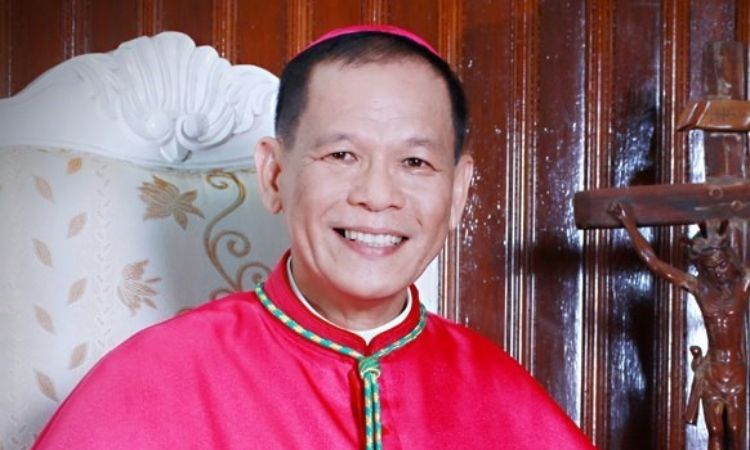
From Dumalag to the world
Monsignor Joad comes from the town of Dumalag, Capiz, a deeply religious town that has also produced another revered local church leader, Archbishop Antonio F. Frondosa, D.D., the first archbishop of Capiz, who ordained another cardinal, the well-loved Jaime Cardinal L. Sin, former archbishop of Manila. Dumalag can now rightly claim its historical importance in the local history of Capiz and the nation as well, for it has now produced a cardinal of the Church, famously called “prince of the Church.”
Cardinal Joad was born on March 30, 1952. His parents were the late Jose “Toting” Firmalino Advincula and Carmen “Inday” Falsis Fuerte. Blessed with 12 children, six boys and six girls, the Dumalagnon couple, through hard work and diligence, managed to provide all 12 children with more than modest education. Two daughters have become doctors of medicine, namely, Dr. Anafe Lustre and Dr. Consolacion Feca; and one, a doctor of dentistry, Dr. Fatima Fajardo; Carmela, the fourth daughter, is an architect; two sisters became respected teachers: Josefa Dimalanta, formerly affiliated with St. Paul’s University, Manila, and Coronacion Grant, now in Canada. The Advincula boys are equally successful in their chosen fields: the late Felixberto was a mechanical engineer; the late Antonio, a chemical engineer; and Candelario, an electronics technician.
Priestly lineage
But what truly makes the Advincula family of Toting and Inday astonishingly remarkable is the fact that three of the 12 siblings became priests, namely, the older brother, the late Monsignor Benjamin called “Manong Ben,” Rev. Fr. Neil Peter or “Petbong,” the youngest among the twelve siblings, presently the parish priest of Cuartero, Capiz, and Fr. Jose Jr., also known as “Teting,” the cardinal-elect.
Vocation to the priesthood is always a rare gift from God to a family, but the family of Toting and Inday Advincula seems to have gotten a better portion of such gift, for two of Monsignor Joe’s maternal uncles were also distinguished priests of the Archdiocese of Capiz. They were: the late Monsignor Sinforiano Fuerte, his mother’s only brother, who became the longest serving rector of Colegio de la Purisima Concepcion in Roxas City, and the late Monsignor Edmundo Fuerte, his mother’s first cousin, the longest serving rector of the Immaculate Conception Metropolitan Cathedral in Roxas City.
Another maternal first cousin is a priest, the Rev. Fr. Antonio Fuerte Arinquin, now a team minister member of the parish of Dumarao, Capiz.
Father Teting finished his elementary studies at Dumalag Elementary School and completed his high school studies as salutatorian in 1968 and a college degree in 1972 at the venerable St. Pius X Seminary in Roxas City, the same institution once headed by the legendary Cardinal Sin, its first rector in 1957. The young Father Teting was a Latin student of then Father Jaime L. Sin. Literally, Father Teting sat at the feet of a cardinal of the Church who himself was considered a local missionary of Capiz prior to his appointment as rector. Decades later Cardinal Sin, born in Aklan but ordained for the Diocese of Capiz, was the rightful choice to deliver the homily during the episcopal ordination of Bishop Joe on September 8, 2001, at the Immaculate Conception Metropolitan Cathedral in Roxas City, Capiz.
If he were alive today, the ever-ebullient Cardinal Jaime Sin would be beaming with pride as his former high-school Latin student now joins the ranks of cardinals. Maybe Cardinal Sin could have said it better: “Arriba, Joe”!
A companion and friend
After his ordination to the priesthood on April 4, 1976, having completed his theological studies at the University of Santo Tomas in Manila and priestly formation at the Central Seminary of the same university, Father Joe, the young priest, returned to his alma mater as professor and spiritual director. There, Father Joe manifested his charism in dealing with high school and college seminarians age 12 to 20. He was not just considered by most seminarians as a Latin teacher or Philosophy professor in Logic but, most of all, as a spiritual director who joyfully found time in listening to their worries and cries (literally) of homesickness, of being away from their parents and families. The young Father Joe was a priest whom the seminarians could easily relate to, someone who would joke with them like a friend inside and outside the classroom, but who would also offer constant words of encouragement.
Father Joe, feeling a sense of inadequacy of being spiritual director at a young age, pursued a degree in Master of Arts in Education, major in Guidance and Counseling at De La Salle University in Manila that further helped him become a better priest-counselor and spiritual director to many seminarians. Through the years, the Pians, the name given to seminarians of St. Pius Seminary, have found a friend, a mentor, and an older brother, as Father Joe would sometimes call some of them not just by their first names but even by their parents’ names. This has made Father Joe truly endearing to many PIANs beyond the walls of the seminary.
One enduring characteristic of the new cardinal-elect is his pursuit for what is best. It seems Cardinal Joe cannot afford to be lackadaisical in his pastoral ministry either as a simple priest or a less-known bishop.
His ministry at St. Pius X Seminary, however, was cut short after he was asked by the late Archbishop Frondosa, his townmate, to study in Rome in 1984. God must have other plans for him. While residing at Pontificio Collegio Filippino in Rome, he enrolled at the Pontificia Universita di San Tomaso, known as the Angelicum, for a degree in Canon Law, the same university where St. John Paul II also studied.
Returning to the country in 1990, the then Father Joe was given an assignment so far away from Capiz. He was appointed canon law professor, spiritual director, and dean of studies of the Immaculate Conception School of Theology, the regional seminary of northern Luzon, in Vigan, Ilocos Sur. He was definitely back to his original love! For the meantime, Capiz had to wait for his much anticipated come back. Though miles away from Capiz, he reckoned the thought of serving once again his home diocese.
After serving the Archdiocese of Vigan for three years, everyone thought that the Father Joe would finally come back to Capiz. But God sent him to another place though closer to Capiz. He was appointed professor and spiritual director of St. Joseph Regional Seminary of the Archdiocese of Jaro in Iloilo from 1993 to 1995.
But being away from home was an opportunity for Father Joe to be acquainted with other priests from the whole Panay Island, Region VI, Negros, and the northern parts of the Philippines. He must have covered and travelled the entire archipelago! Until today, Cardinal-elect Joe can carry a conversation in Ilocano and Cebuano. He amazingly possesses the gift of language and is blessed with a sharp memory. One may bet that, at 68, he can still recall the intricate Latin conjugations or even win a scrabble match.
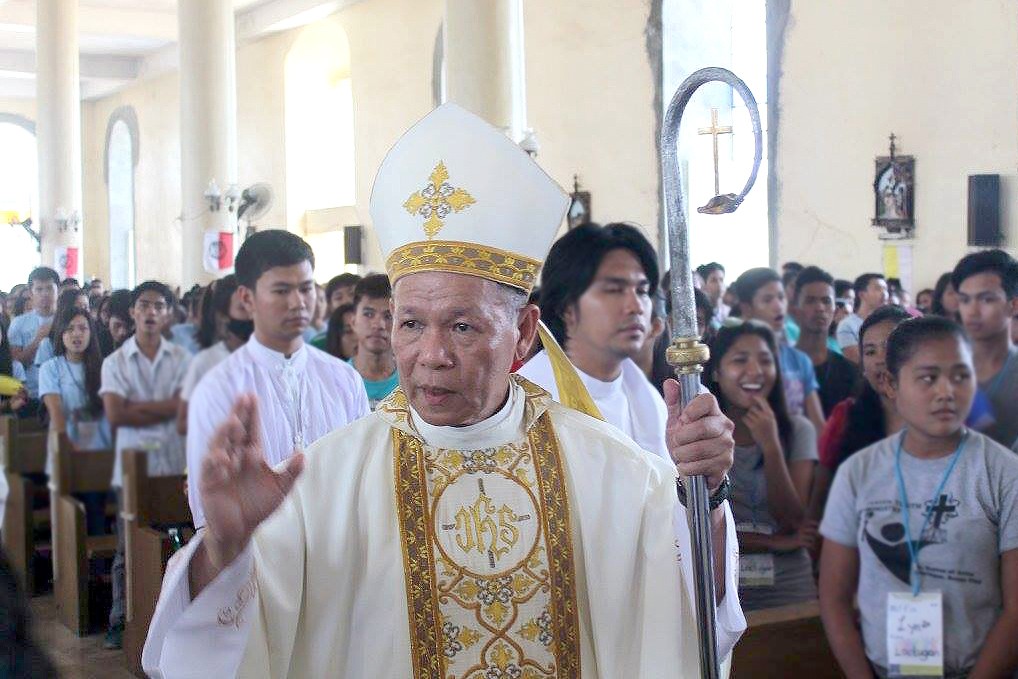
Audiam
His episcopal motto, “Audiam” (I will listen), explains everything that Archbishop Joe does, a bishop who loves to listen, truly a discerning leader in times of crises and trials. He never gets tired of listening to his priests, seminarians, religious, and lay people in their moments of difficulties. Never quick to judge, he avoids being biased to any priest. He epitomizes an all-embracing kind of person shunning no one, giving each one a chance to be heard or listened to.
In most monthly meetings of priests that sometimes run for more than four hours, Archbishop Joe patiently listens without losing his thought and composure, except for a bathroom break, a result perhaps of drinking too much coffee around 6:00 a.m., that has become his daily routine, aside from an early jog or walk around the seminary grounds surrounded by lush and tall trees. He gladly boasts that a one-hour jog energizes and prepares him for the daily grind. For instance, he would even take a quick jog at the Luneta Park, whenever he was in Manila for meetings with the Catholic Bishops’ Conference of the Philippines as former member of its permanent council and head or member of other episcopal committees.
Passion for nature and environment
Monsignor Joe has always been a lover of nature and environment. Up to this day, he can still identify and even name the numerous trees he once planted in the college seminary in Cagay, Roxas City, with instructions to preserve them. In his younger years as a priest, Monsignor Joe loved to trek mountains and hills. When in the United States, for instance, he would first look for mountains or hiking trails or, at least, an open park where he could jog or walk. Seldom would he look for a shopping mall, except for a sporting store where he could buy his running shoes and shorts.
As the first rector of Sancta Maria Mater et Regina Seminarium in 1999, the major seminary of the Archdiocese of Capiz, Monsignor Joe would spend his weekends together with some seminarians and priests trekking the mountains of Tapaz that, unknown to many, brought the newly elected cardinal to be in contact with the Tapaz Bukidnons, the indigenous people of Capiz. Because of those mountain hikes, his passion for years, the would-be cardinal literally saw the sad plight of poor people in far-flung areas; and thus, recognizing the need not only to evangelize but also to help them. This is actually called the culture of encounter espoused by modern theologians as a means of bringing the gospel message to diverse people and culture. Up to this day, Archbishop Joe still shares his dream of having indigenous songs being sung in the local Church of Capiz.
Trailblazing with Monsignor Joe
Way back in 1995, Father Joe came home quietly after a long journey of seminary assignments outside the province of Capiz. He was immediately appointed rector of St. Pius X Seminary upon the retirement of Monsignor Daniel Viloria. Father Joe went back where he once belonged and where it all started.
As the sixth rector of St. Pius X Seminary starting in 1995, Monsignor Joe persuasively and patiently introduced some radical changes in the seminary life and formation of young seminarians. Foremost of which was his emphasis on community life of seminary priests by having common recreations and annual outings. Notably, Monsignor Joe instilled to younger seminarians the need to break the so-called culture of seniority so prevalent at that time.
Heeding the call of the late Archbishop Onesimo C. Gordoncillo, D.D., the second archbishop of Capiz, who had already foreseen in 1995 the need of a separate building for college and theology seminarians in Capiz, Monsignor Joe supported and helped such initiative. His immediate proposal to send priests abroad for higher studies in theology and philosophy in preparation for seminary and school assignments showed his impeccable sense of foresight often seen in his ministry. He certainly thinks ahead as a leader. Inevitably, he became the first rector of Sancta Maria Mater et Regina Seminarium when it formally opened in September 1999.
In February 2000, however, he was given his first and only pastoral assignment as parish priest of Sto. Tomas de Villanueva in Dao, Capiz. But after a year or so, a new journey began to unfold. Monsignor Joe was appointed bishop of San Carlos Diocese, Negros Occidental, on July 25, 2001, by St. Pope John Paul II and was ordained bishop on September 11, 2001. It looks as if his ministry as a priest is filled with journeys outside and inside the Archdiocese of Capiz, or one may say, a continuing journey.
Fast forward to 2012, Monsignor Joe made his third homecoming to Capiz, after serving so well the Diocese of San Carlos in Negros Occidental from September 2001 to 2012, where he initiated the building of ten mission churches and three mission schools in far-flung or mountain areas. He gladly recalled those experiences climbing mountains just to reach a particular mission church. In many ways, prior to Pope Francis, Bishop Joe has already assimilated the meaning of going to peripheries.
On January 12, 2012, the province of Capiz did not just welcome a distinguished son but also witnessed the installation of the third archbishop of Capiz, the Most Rev. Jose F. Advincula Jr., having been appointed archbishop by Pope Benedict XVI on November 9, 2011. And immediately, new things and perspectives in leadership in the Church of Capiz began to reverberate among priests and laypeople. The late Leny Mabasa, a lay papal awardee, once mused in Hiligaynon: “Sa pag-abot ni Monsignor Joe, maga-arriba gid ang Capiz (with the arrival of Monsignor Joe, Capiz will soar high).” Those words proved prophetic. Sadly, Leny Mabasa, the generous donor of the lot where the Cagay Seminary now stands, died a year before Monsignor Joe became a cardinal. May he rest in peace. A cardinal is now praying for him.
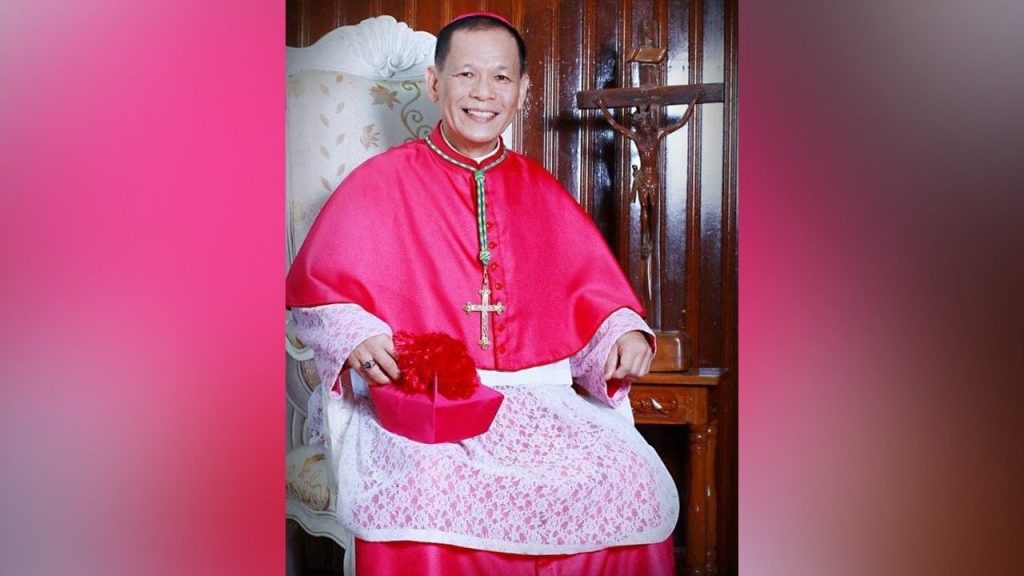
Mission station churches in Capiz
Archbishop Joe’s first meeting in 2012 with the clergy of Capiz, about 120 priests at that time, was rather more prophetic if not monumental. Usually priests expect to get new parish assignments upon the assumption of a new bishop in a particular diocese. But Archbishop Joe’s first announcement was nothing but the creation of mission station churches all over the archdiocese.
Enriched by his pastoral experience in the Diocese of San Carlos, he is convinced that the creation of small and new churches in the mountains and far-flung barangays (villages) in the whole province of Capiz will bring the Church closer to the people and that the priests themselves will become more available to the people. He would often repeat one pastoral reminder to all his priests: not to be comfortable but readily available for people. In many ways, Archbishop Joe has stirred and eventually molded a new pastoral approach for the Church of Capiz. He remains hopeful that someday Capiz will hold its first ever diocesan synod in celebration of the 500 years of Christianity in the Philippines come 2021.
The establishment of mission churches is no less daunting for it requires financial and human resources, including the much feared breaking up of bigger parishes into small churches in some towns. But all of a sudden, growing interest and excitement ensued among laypeople upon hearing the news of having a new church nearer and closer to them. Thus, some well-meaning and generous Capizeños started to donate a portion of their lot for the construction of mission churches while most people worked hand-in-hand with their mission station-priests in various fundraising initiatives such as fun-run, raffle tickets, offering of rice-produce, selling of shirts, candles, and solicitations both here and abroad. The mission station churches have reinvigorated the whole Church of Capiz as laypeople have become more involved and participative in Church activities. Significantly, mission station churches have contributed to the growth of vocation to the priesthood, as more young men from far places or barangays have become interested in entering the seminary.
In a span of eight years, 29 mission station churches were erected and built in far places and remote towns across the 17 municipalities of the province of Capiz. Today, the Archdiocese of Capiz boasts of 64 parishes. Archbishop Joe has increased the number of churches in less than eight years, a phenomenal growth indeed, from 35 to 64 churches. More than these, the gospel message of Christ has been brought closer to many people in far-flung, remote, obscure, and poor places. Silently yet effectively, the urgent call of Pope Francis, at the beginning of his pontificate, of bringing the Church to the peripheries finds its clearest expression in the evangelizing and trailblazing efforts of Archbishop Joe together with the clergy and the faithful of Capiz.
The priests he loves
Another expression of renewal introduced by Archbishop Joe in Capiz can be gleaned from his overarching concern towards the welfare of his priests, particularly by paying attention to the needs of old, sick, and retired priests. For this purpose, he established a religious group called Merciful Missionaries of St. Joseph to work in Capiz to primarily take care of the old, sick, and retired priests. He spearheaded the construction of a two-story facility called Lolek’s Home located inside the compound of St. John Paul II Parish in Roxas City. With the generous support and donation of Capizeños, benefactors, friends from abroad, and various fundraising activities of priests and parishes, the dream will soon become a reality.
His concern and love for the clergy is as palpable and tangible as that of a father for his children. He would personally visit his priests in hospitals or sick beds, and even be at the side of his dying priest. He never hesitates to make an unannounced visit to a particular parish for a cup of coffee or join a simple birthday lunch for his priest. He would always make himself available by being the mass presider during parish fiestas or Misa de Gallo in far places or towns. In several instances, he did not mind waking up as early as 2:00 am just to be on time for the celebration of the Eucharist for people in far-flung parishes and newly created mission churches. Like a true shepherd to his flock, Archbishop Joe shares the joys, hurts, and trepidation of his priests. He was, for instance, exuberant when Monsignor Victor B. Bendico, the former vicar general of the Archdiocese of Capiz, was appointed Bishop of Baguio in 2017.
Archbishop Joe’s love for his priests goes beyond the construction of a retirement home for them. Starting in 2012, he carefully planned out the continuing education and formation of his priests after ordination. Though scant in financial resources, he sends priests to various universities in Manila and abroad. He is convinced that continuing education of the clergy is needed for seminaries and schools. Aside from the usual pontifical degrees pursued by priests, Archbishop Joe encourages his priests to enroll in other sciences including civil law that would eventually help the Church of Capiz. As of now, some priests have already taken courses in Educational Management either at De La Salle University, the University of Sto. Tomas, the University of the Philippines, or St. Paul’s University. Recently, two priests have already earned their professional licenses as civil engineer and architect respectively. Despite the high cost of education abroad, he does not stop sending Capizeño priests to Rome, where one of his young priests has been admitted recently to the Pontifical Ecclesiastical Academy, the school of future diplomats, papal delegates and nuncios of the Roman Catholic Church. A first in the history of the Church of Capiz.
Archbishop Joe’s vision for the Church goes well beyond the peripheries. Aside from parochial or domestic concerns, he truly understands the universality of the Church. One, then, should not be surprised to accidentally meet a Capizeño priest studying in the famous University of Vienna or another Capizeño priest serving a diocese either in the US mainland, Guam, or England. These priests were all sent by Archbishop Joe to other dioceses needing immediate help due to scarcity of priests abroad. At one point, he even mentioned of sending Capizeño priests to Africa as missionaries.
Crises and development
The super tyhoon Yolanda in 2013 had also brought havoc to many churches and institutions under the Archdiocese of Capiz. Hours after the landfall of the said typhoon, Archbishop Joe was already calling almost all his priests, expressing solidarity and concern for those whose rectories and churches had been badly damaged. Even when national roads remained impassable, Archbishop Joe hastened to assess the actual situation on the ground by visiting churches and schools affected by the typhoon. Unknown to many, the Archbishop Joe’s residence, particularly his room, was also heavily damaged– he himself did not know where he would stay in the following days or months.
But the calamity has unraveled Archbishop’s Joe servant-leadership with a sense of prophetic urgency to rise above every dire situation. Wasting no time, he indefatigably looked for funds by appealing to various funding and charitable agencies and dioceses for the rebuilding of churches all over Capiz. At one point, he went abroad to personally appear before international agencies like Caritas Italiana and Caritas Vienna, armed with a development plan for the rebuilding of the Archdiocese of Capiz. Indeed, his efforts were not futile; the Archdiocese of Capiz providentially received grants and donations from abroad, countries like Italy, the United States of America, Germany, Austria, Switzerland, among others.
Through a systematic planning creatively crafted and executed by Fr. Mark Granflor, the Social Action Director of the Archdiocese of Capiz, various housing projects in poor parishes badly hit by the typhoon were implemented, coupled with several livelihood programs for sustainability. Added to this program was the construction of three evacuation centers in typhoon-prone parishes and a new vocational and technical school for out-of-school youth and those people who cannot afford a formal college education. This newly created school is named after Archbishop Joe’s favorite saint, of course, his namesake, St. Joseph, the silent and hardworking carpenter.
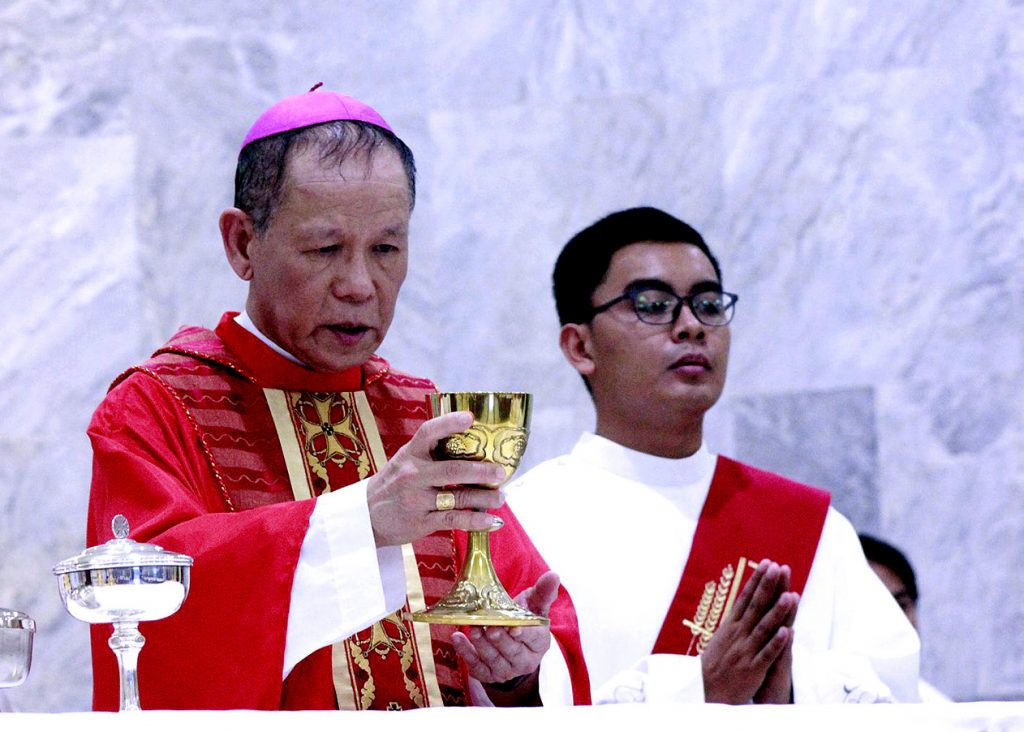
The last journey
One may think that Archbishop Joe, at 68, deserves to rest, a respite after all these pastoral initiatives he has endeavored throughout his episcopal ministry. Or, it is but natural for him to anticipate, as he often does in most things, his retirement. That could have been his final journey, so to speak, just fading quietly away from public ministry. He envisions a serene and rustic area planted with trees, vegetables, and perhaps raising native chicken at his backyard. Surely, he is looking forward to a place where he can still walk with verdant and tall trees around.
However, far from the least he expects, he braces for another journey soon to begin come November 28, 2020 at St. Peter’s Basilica in Rome when the Holy Father, Pope Francis, during the ordinary consistory of cardinals, hands him a red hat, a symbol of martyrdom and willingness to sacrifice for the sake of the Church and not for any pomp or grandeur.
On that day, we Filipinos here and abroad will be watching an unknown archbishop of Capiz and the ninth Filipino cardinal dressed in full regalia fit for a prince of the Church, as they say. He will be marching solemnly towards the altar, where the remains of a once hesitant but nevertheless courageous fisherman from Galilee, an apostle named Peter chosen by Christ to lead the Church, will stand as a silent witness to the unknown journey of another Filipino cardinal, His Eminence Jose Cardinal Fuerte Advincula Jr., all the way coming from an unknown, far, and remote local church, the Archdiocese of Capiz, Philippines. Mabuhay si Cardinal Teting, Mabuhay ang Paring Pilipino!

